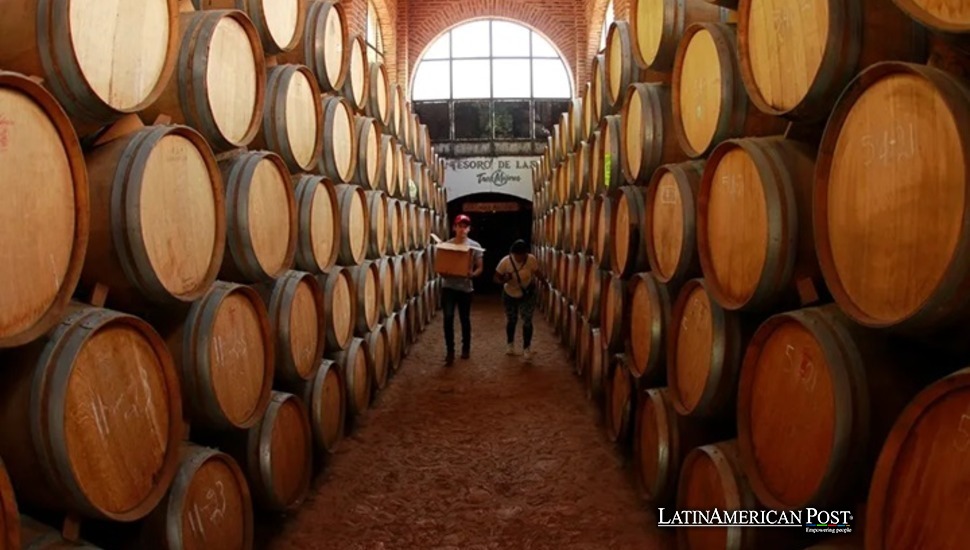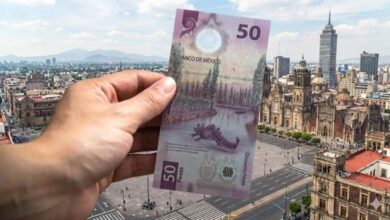Mexico’s New Tequila Lab Fuels Business and Safeguards Heritage

Tequila’s cultural allure and commercial promise unite in a groundbreaking initiative to celebrate Mexican heritage. Jalisco’s newly launched Tequila Lab aims to elevate the iconic drink’s profile, protect the agave landscape, and provide new opportunities for businesses and enthusiasts worldwide.
A Blend of History and Modern Vision
When people think of Mexico, tequila often comes to mind as a cultural and gastronomic symbol. Produced primarily in the state of Jalisco—situated in the country’s western region—this distilled beverage has long captured imaginations across the globe. Yet, many enthusiasts and connoisseurs overlook the depth of history, artistry, and business potential surrounding its creation. Seeking to remedy this gap, El Consejo Regulador del Tequila (CRT) and the Government of Jalisco unveiled a new cultural space, the Tequila Lab, in Guadalajara, the region’s bustling capital city.
IRooted in a deep respect for tradition, the Tequila Lab aspires to elevate tequila beyond a mere spirit for celebrations. Instead, it aims to inform visitors about the rich tapestry of culture that envelops every bottle: the families who have cultivated the agave fields for generations, the innovative distillers who have refined the process, and the local businesses that thrive on the trade. Presenting this network gives the lab a lively cultural view and opens new business opportunities.
Miriam Villaseñor, the Lab’s director, architect, and principal planner, stresses the project’s goal. She says one main aim is to introduce people to tequila’s history. This includes why it became the first Mexican product to obtain a Denomination of Origin (DO)—similar in prestige to the legal protections afforded to Champagne in France—and how the agave landscape came to be officially recognized as part of Mexico’s national heritage.
Visitors are invited to begin an experience that starts in the museum section. Exhibitions explain the botany of the blue agave plant and the local geography formed by volcanoes. This approach connects old legends with modern science. Showing tequila within its natural and cultural background lets new visitors understand why the spirit spread worldwide, delighting people.
By learning the fundamentals—how agave is grown, when and why it is harvested, and the stories of the people behind the fields—visitors gain a renewed appreciation for the intricacies involved in producing the “Mexican drink par excellence.” For business people and travelers, the Lab shows new market options: creative packaging, specialized tours, and eco-friendly tools to distill tequila. The mix of culture and business sits at the core of tequila’s changing story.
Showcasing an Immersive World of Agave
A key part of the Tequila Lab is its immersive experiences. These displays affect visitors deeply. They do more than share facts; they spark feelings that build a closer bond with Mexico’s well-known spirit. Big digital projections, interactive exhibits, and rich sounds form a space where one sees, hears, and almost tastes the agave’s journey from field to bottle.
A key part of this plan is a 3D map that shows Jalisco’s unique land and nature. The map uses lights with a voiceover. It takes viewers back to the region’s volcanic past. Mesoamerican tales say the volcanoes gave blue agave good conditions, which led to tequila. This legend shows tequila’s strong tie to Mexico’s land and traditions.
The Lab also offers a 360-degree audiovisual display. It shows a wide video of agave fields, called the passage agave, in clear detail. Named a UNESCO World Heritage Site in 2006, these fields are mainly part of tourism and fuel tequila making. Visitors learn how these plantations help nature and local economies with clear images and authentic sounds.
A highlight for connoisseurs is the interactive segment in which visitors can learn about different categories of tequila—blanco, reposado, añejo, and extra-añejo. The Lab breaks down the subtleties in flavor profiles, aging processes, and recommended pairings through digital touchscreens and guided narrative. This feature allows novices to educate themselves before participating in the more hands-on tasting sessions offered on-site. Experienced fans can learn more about advanced aging techniques, like extra rested reposados and special barrels from far-off places.
Beyond these tech wonders, the museum shows popular art. This contrasts with digital views: handmade displays and folk art pieces that show tequila’s cultural core. The exhibits include small clay models that show traditional harvesting and modern art pieces that show tequila’s changing spirit while honoring Mexico’s art traditions.
These experiences help not only casual tourists. They give helpful tips for investors who want to grow tequila businesses abroad or marketing experts who want to use tequila’s long history. By weaving together captivating storytelling with modern display techniques, the Tequila Lab positions itself as a cultural treasure and a hub for forward-thinking entrepreneurs ready to explore tequila’s global resonance.
Where Thousands of Bottles Tell a Story
When you enter a tall space covering three floors, you see 2,400 tequila bottles—a large tribute to the art and variety of tequila. Each bottle, from small handmade runs to big commercial labels, holds its own story. The sheer range of shapes, labels, and brand backstories reflects the passion and ingenuity at play in Mexico’s tequila community.
Collectively, these 2,400 bottles form a mosaic of innovation, tradition, and market evolution across five states granted the Denomination of Origin for tequila production (Jalisco, along with specific regions in Guanajuato, Nayarit, Michoacán, and Tamaulipas). The collection displays limited edition bottles with handmade designs as well as popular brands that built global distribution systems; it proves to be a lively mix in the industry.
As Villaseñor says, the Tequila Lab works to get this collection acknowledged by Guinness World Records. This honor would bring more visitors and fix Mexico’s role as a main speaker in the global spirits field. This attention may lead to more international interest and alliances for local distilleries and artisans.
Although this impressive display targets collectors and brand fans, it also has a larger educational role. The evolution of styles over time and across regions shows how shifts in consumer needs, production methods, and marketing ideas have formed today’s tequila market. Old bottles rest next to current ones, giving a visual record of economic, social, and artistic changes.
Next to this mix of designs, the Tequila Lab’s tasting area gains significance. Instead of merely tasting, visitors get details about flavor profiles, regional differences, and craft methods. This combination of seeing and experiencing reveals the Lab’s aim: to honor tequila’s past, present, and future.
Of course, the Lab extends far beyond static displays. According to organizers, the architecture of the bottle exhibit is itself an attraction, constructed with towering glass shelves and dramatic lighting. It invites reflection on tequila’s evolution from a modest local brew to an internationally celebrated beverage. More importantly, it sparks discussions on sustainability, responsible growth, and how best to maintain quality standards amid expanding demand.
Cultural, Environmental, and Business Synergy
Tequila Lab excites cultural fans, supports environmental protection, and offers new business ideas. It sits in a nature reserve and helps people appreciate the unique life that grows agave. The Lab invites visitors to see this green area and shows how nature conservation works with a strong tequila industry.
A key idea of the Lab stresses the need to save the agave plant and its home. Harmful farming and global demand risk upsetting the local nature. With workshops and seminars next to tours, the center shows farmers, business owners, and tourists how to plant, harvest, and use resources correctly. It mixes old ways with new ideas, a view shared by eco-tourism and nature-restoring farming groups.
This blend of tradition with care for nature creates many business chances. Tour operators can develop immersive experiences that balance fun, learning, and sustainability. Local craft distilleries can partner with farmers to secure organic, ethically sourced agave. Startups focusing on packaging innovation or zero-waste initiatives find fertile ground for research and collaboration in this new ecosystem. The Tequila Lab’s business hub is where producers, investors, and distributors meet for networking product launches subsequent to strategic chats.
Simply put, the Tequila Lab links past and future. It respects the art, folklore, and history behind tequila. In business, it speeds progress that respects nature while helping local communities. This proves that tequila is a dynamic business that can expand abroad.
As tequila consumption rises worldwide, Jalisco’s role increases. The region stands out as the birthplace of tequila and a current maker. The Tequila Lab sends a clear message that welcomes the world to share Mexico’s heritage while seeking fresh opportunities with this popular spirit.
This center links to a larger movement in Mexico that honors traditions while carving paths in commerce and sustainability. With exhibits of 2,400 bottles and a UNESCO-recognized agave area, visitors see that tequila is more than a drink; it demonstrates Mexico’s power, inventiveness, and global outlook.
The Tequila Lab offers fresh cooperation opportunities for local entrepreneurs and established brands. In a tougher spirits market, real worth and plain methods count. The Lab’s model underscores how these qualities, rooted in heritage and supported by sustainable methods, can elevate a product’s appeal and commercial success.
Tequila’s future, like its past, is a shared story. Distillers, marketers, travelers, and experts each play a role. Whether you are a beginner or a specialist, the Tequila Lab fully introduces the people, landscapes, and businesses that form Mexico’s cherished spirit. It shows that tequila belongs not only in bars or parties but also in discussions about preserving culture, protecting the environment, and global trade.
Also Read: Mexico Nissan Alliance Uncertain as Automaker Faces Worldwide Headwinds
The Lab’s final message proves this complex nature: tequila shows how Mexico’s identity and dreams keep changing. By weaving heritage, ecology, and enterprise into one cohesive experience, the Tequila Lab proves that Jalisco—and the broader network of tequila-producing states—stand ready to chart new horizons for this iconic drink. For visitors, the takeaway is simple but profound: to sip a glass of tequila is to taste centuries of history, ingenuity, and a hopeful vision of what lies ahead.





